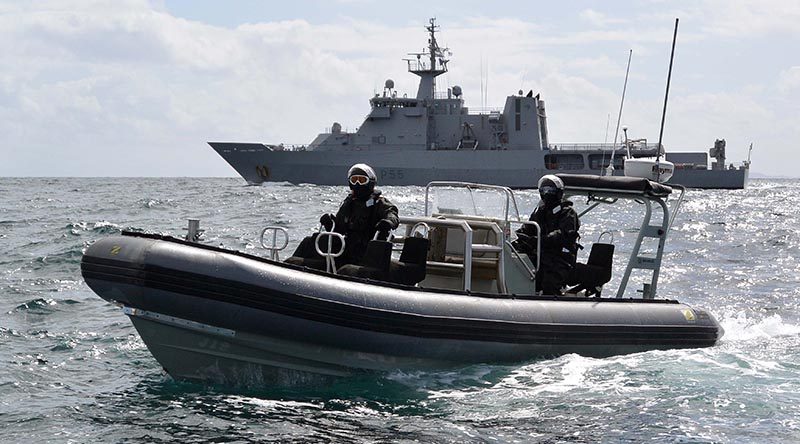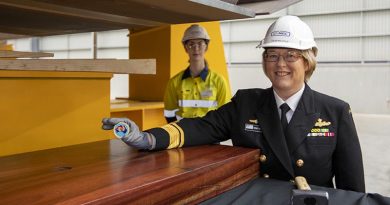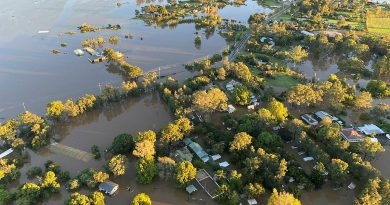RNZN on resupply mission to sub-Antarctic

The New Zealand Defence Force (NZDF) is taking 54 government staff and five tonnes of equipment needed to maintain and repair key buildings in a three-phase operation in the sub-Antarctic islands.
FILE PHOTO: Royal New Zealand Navy’s offshore patrol vessel HMNZS Wellington in the sub-Antarctic on a resupply mission for the Department of Conservation and MetService.
Commodore Jim Gilmour, the Maritime Component Commander, said the Royal New Zealand Navy’s offshore patrol vessel HMNZS Wellington would be providing logistical support to the Department of Conservation (DOC) and MetService as they do resupply and maintenance work in the Antipodes, Auckland and Campbell islands from 18 February to 18 March.
HMNZS Wellington left Dunedin yesterday, with Minister for the Environment Eugenie Sage on board.
“Although joint military operations remain the NZDF’s core business, we also undertake a range of tasks in support of other agencies such as DOC and MetService to understand and protect our environment better,” Commodore Gilmour said.
At the Antipodes, which was the scene of one of the world’s most complex mouse-eradication projects in 2016, 10 staff from DOC and three conservation dogs will scour the island to determine whether the project has been successful.
Two albatross researchers will also be collected from the island after spending the summer researching the endangered Antipodean albatross.
Steve Knowles, Network Operations Manager at MetService, is leading a six-member team from the agency to carry out maintenance work on the meteorological buildings at Campbell Island.
MetService will also be launching four drifting buoys in the Southern Ocean for the Scripps Institution of Oceanography, which is one of the world’s oldest, largest and most important centres for ocean, earth and climate science research.
This would be the first time this new generation of drifting buoy had been used in the Southern Ocean, Mr Knowles said.
“If successful, the new technology will be included in future drifting buoy production, with the potential to produce ocean swell data at a much higher resolution than currently available to feed into global oceanographic computer models,” he said.
The Antipodes are inhospitable, volcanic islands in sub-Antarctic waters 760 kilometres south-east of Dunedin.
Campbell Island, 700 kilometres south of the South Island, is the most southerly of the five New Zealand sub-Antarctic groups and is one of the cornerstones of New Zealand’s sub-Antarctic World Heritage Site.
.
.
.
.
.

.
.





